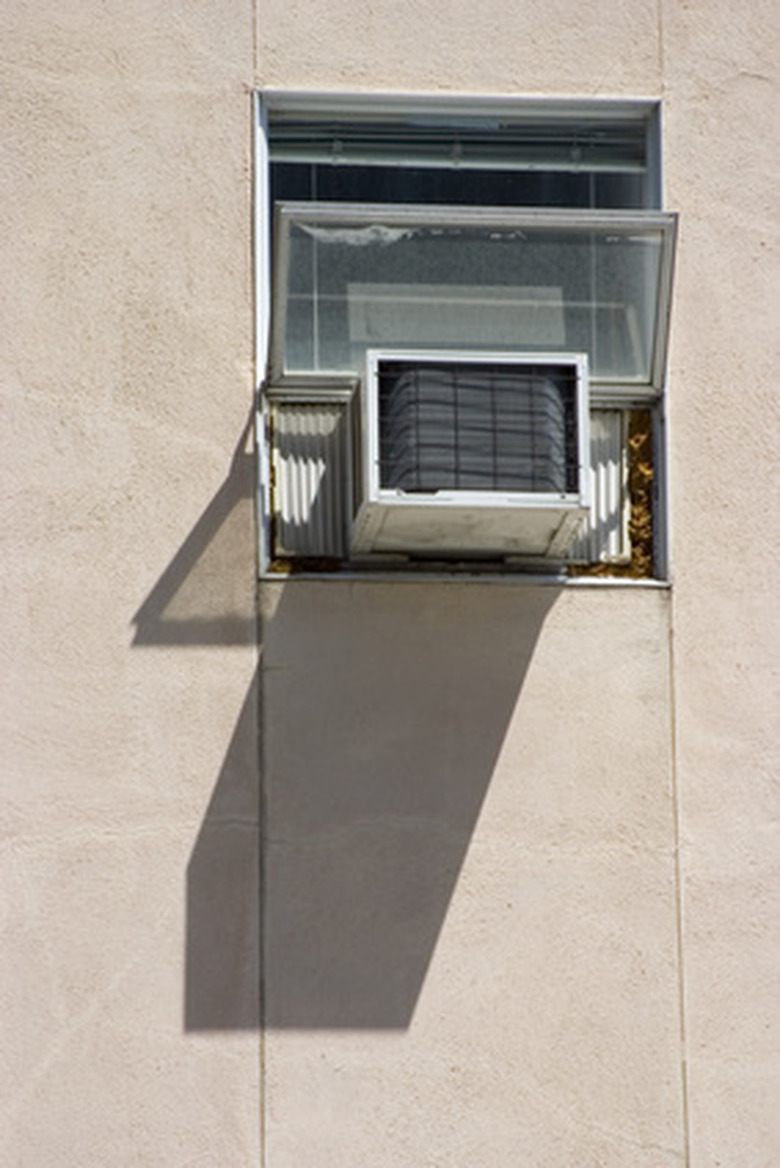How To Calculate Condensate Flow From AC Units
Condensate forms when moist air touches an air conditioner's cold evaporator coils. The air's water vapor condenses into water and either discharges directly or drains into a specific duct. Conservation groups in dry regions suggest collecting and using this water for gardening or other uses.
More humid air produces condensate at a higher rate. An air conditioner that moves air more quickly also produces condensate at a higher rate. Finally, denser air results in a higher condensate flow.
Step 1
Multiply the air conditioner's flow rate, measured in gallons per minute, by the air's specific humidity, measured in pounds of water per pound of dry air. If 12 gallons flow through the unit per minute, and the air has a specific humidity of 0.0065 pounds of water per pound of dry air: 12 x 0.0065 = 0.078.
Step 2
Multiply the volume of one pound of dry air, measured in cubic feet, by 8.33, a conversion constant. If a pound of air takes up 400 gallons of space: 400 x 8.33 = 3332.
Step 3
Divide the answer to Step 1 by the answer to Step 2: 0.078 / 3332 = 2.34 x 10^-5. This answer is the AC's rate of condensate flow, measured in gallons per minute.
TL;DR (Too Long; Didn't Read)
Your AC's owner's manual lists its flow rate.
The first link in Resources lists various locations' average relative humidity. The second link provides a calculator to convert relative humidity to specific humidity.
Cite This Article
MLA
Menezes, Ryan. "How To Calculate Condensate Flow From AC Units" sciencing.com, https://www.sciencing.com/how-7909818-calculate-condensate-flow-ac-units/. 7 August 2017.
APA
Menezes, Ryan. (2017, August 7). How To Calculate Condensate Flow From AC Units. sciencing.com. Retrieved from https://www.sciencing.com/how-7909818-calculate-condensate-flow-ac-units/
Chicago
Menezes, Ryan. How To Calculate Condensate Flow From AC Units last modified March 24, 2022. https://www.sciencing.com/how-7909818-calculate-condensate-flow-ac-units/
